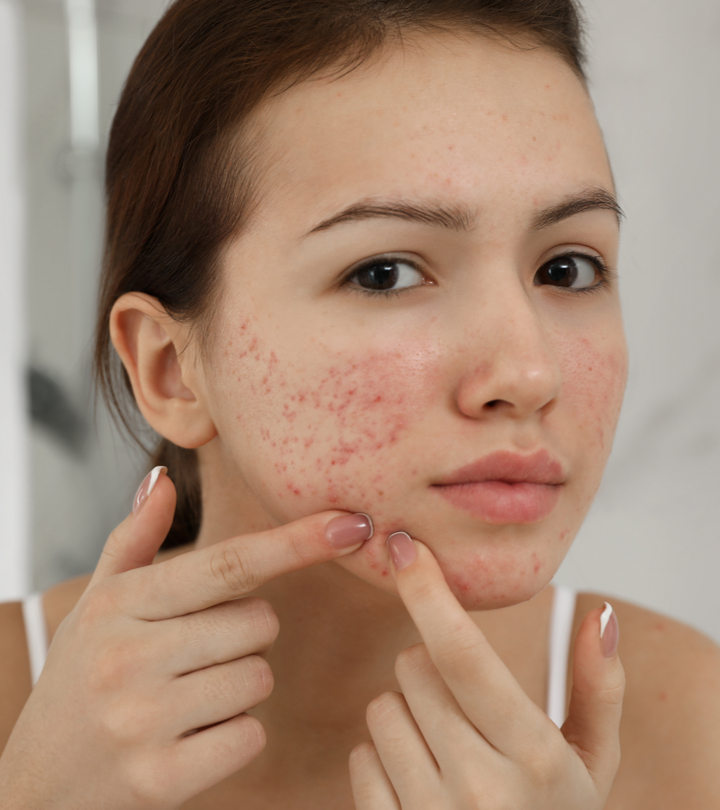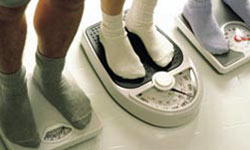Once upon a time, people dieted to lose weight. In the 21st century, a new class of diet trends is shifting the primary focus from getting skinny to getting clean — eliminating the "toxins," "chemicals" and allergens that might be making us feel, well, icky (and keeping us from looking our best).
Among these is the elimination diet, though in its true form it’s not a trend. It’s a long-standing medical diagnostic tool used to help identify serious food allergies, like the ones that send tens of thousands of people to emergency rooms every year in the United States [source: Woznicki]. Doctors, nutritionists and other health professionals also use it to try to pinpoint foods that might be causing or exacerbating less-serious but still problematic conditions like irritable bowel syndrome, rheumatoid arthritis or migraine headaches [source: Jacob].
The goal of the elimination diet is simple: to find out if a symptom is caused by an adverse reaction to a particular food (or food additive). If the symptom goes away after that food is eliminated and returns when that food is reintroduced, there’s almost certainly a link.
In practice, though, it’s a fairly intense undertaking, and the results are not airtight. Doctors usually supplement the diet with other forms of testing to get closer to a definitive diagnosis [sources: Mayo Clinic, FARE].
In its DIY form, results are even less reliable [source: Nassauer]. Still, increasingly more people are conducting their own elimination diets, trying to identify food allergies, intolerances or sensitivities they believe may be triggering a wide range of hard-to-explain symptoms, including bloating, stomach pain, acid reflux, depression, acne, joint pain, fatigue and difficulty losing weight [sources: Caldwell, Watts].
It’s not necessarily a bad thing. For people in relatively good physical and psychological health, and who aren’t having life-threatening reactions to food, a short-term elimination diet can at least be eye-opening, and at most might reveal a possible "problem food."
The diet’s popularity is easy to explain: Roughly 30 percent of the U.S. population believes it suffers from a food allergy [source: Woznicki]. And while the actual percentage is closer to 3 or 4 percent, that doesn’t mean the others aren’t suffering [sources: Woznicki,Watts]. The discrepancy could result from a simple misunderstanding of the term "allergy" [source: The Cleveland Clinic].
Contents
- Defining Allergies, Intolerances and Sensitivities
- The Meticulous Process Behind Elimination Diets
- The Dark Sides of DIY Elimination Dieting
Defining Allergies, Intolerances and Sensitivities
“
A girl undergoes allergy testing at the hospital and shows an allergic reaction in the form of atopic dermitis (eczema).
BSIP/UIG via Getty Images
Food allergies, intolerance and sensitivities have a lot of overlapping symptoms, but they’re different conditions.
An allergy is caused by the immune system – the human body’s defense against what it perceives to be harmful invaders, such as viruses. Sometimes, the immune system gets it wrong. In the case of a food allergy, the immune system interprets a particular food as a harmful invader, and it sends cells – either T cells or IgE antibodies, depending on the allergy type — to fight it. This battle can result in symptoms like diarrhea, vomiting, stomach pain, rash, breathing difficulties, chest pain and/or, at worst, anaphylaxis [source: Woznicki]. Anaphylaxis sends the body into a state of shock, and it can be fatal [source: Mayo Clinic].
Allergic reactions occur anywhere from a few seconds to a few hours after ingesting the allergen, and a person with allergies will always have a reaction to a particular food, every time it’s eaten, regardless of how much is eaten. Peanuts, eggs, soy, wheat and shellfish are common allergens [sources: Allergist, WebMD].
Food intolerance is a different animal. It’s triggered by the digestive system, not the immune system. Typically, a person’s digestive tract lacks the enzyme required to digest a certain food [source: Woznicki]. Symptoms can take up to two days to appear and may include cramping, bloating, vomiting, diarrhea, headaches, irritability and/or anxiety [sources: Medical News Today, WebMD]. Intolerance to lactose is common [source: Woznicki]. Celiac disease, which involves an inability to digest gluten, is technically a gluten intolerance but also has an immune-system component, which is why it’s sometimes called a "gluten allergy" [sources: Celiac Disease Center, Woznicki].
Intolerance reactions within the same person can vary and often depend on how much of the food is consumed [source: Cleveland Clinic]. Intolerances can improve through the use of supplements or periodic abstinence [source: Medical News Today].
Intolerance and allergies are pretty well-understood. Sensitivities, on the other hand, are understudied and something of a mystery to medical science beyond the fact that they occasionally make people feel unwell. A person’s sensitivity reaction to a food or food additive (MSG is a common one) can vary from one day to the next [sources: Kerr, IFT, Woznicki]. Aside from the fact that they’re definitely not allergies, at the moment, sensitivities are anybody’s guess [sources: IFT, Woznicki].
Regardless of what’s behind the unpleasant feeling, if there’s some evidence of a connection with eating, an elimination diet might be able to help with diagnosis. Obtaining accurate results is no picnic, though.
The Meticulous Process Behind Elimination Diets
Elimination diets typically take about three to eight weeks to complete [sources: FARE, Medical News Today]. They involve four basic steps: planning, eliminating, reintroducing and evaluating.
The planning phase centers on identifying symptoms and potential problem foods. Professionally guided plans often eliminate a dramatic range of foods (sometimes even tap water) [source: WHC]. For the layperson, the most common approach is to eliminate the usual suspects — dairy, soy, nuts, eggs, gluten, sugar and alcohol [source: Nassauer].
To individualize, some people keep a food journal for at least a week before starting, recording what they eat and how they feel throughout the day, which may suggest links, and noting which foods they eat most and crave most, since these often turn out to be culprits [source: UW Integrative Medicine].
Then, all those foods go away. The elimination phase typically lasts two to three weeks, which is enough time for symptoms to disappear if any of the eliminated foods were causing them. Some people experience withdrawal symptoms like fatigue or headaches in the initial few days [source: WHC].
During the elimination phase, it’s important to keep a food diary (the dieter may have already been doing so) and to take in enough calories and eat nutritional substitutes for eliminated food groups [sources: WebMD, WHC]. For instance, if the diet calls for cutting out all dairy, other sources of calcium, like collard greens and figs, and vitamin D, like salmon and tuna, need to be added in [source: Mattheis].
By the end of the elimination phase, any food-related symptoms will have disappeared, and re-introduction begins. The goal is to learn exactly which foods are related to which symptoms, and detailed note-taking is crucial. The dieter adds foods back into the diet one at a time, with several days between each reintroduction to give the body time to reproduce any associated symptoms. If symptoms return after a reintroduction, that particular food (or food group) is likely causing them [source: FARE].
Once the dieter reintroduces all eliminated foods, the experiment is over, and it’s time to formulate a long-term diet, preferably with expert help. Foods that appear to have triggered negative reactions may be eliminated for the long run, or they may be incorporated in doses determined not to trigger symptoms.
A long-term diet should be both free of triggers and nutritionally sound, and the latter may prove difficult if many nutritious foods or entire food groups were identified as triggers. This is one of the problems with DIY elimination dieting: When undertaken without expert guidance or oversight, they can end up causing harm.
Start With What You Know
If you’ve already been diagnosed with a nonfood allergy, you’re (sort of) in luck: Some allergies to nonfood items have potentially associated food allergies. People with latex allergies, for instance, also may be allergic to apples, carrots, raw potatoes and tomatoes, among other foods [source: ACAAI]. Those allergic to ragweed pollen may react badly to bananas and melons [source: Mayo Clinic].
The Dark Sides of DIY Elimination Dieting
Many professionals are wary of the elimination-diet trend. Maybe they’re troubled by the health problems that can result from DIY elimination dieting, or from the lack of empirical evidence that it actually does what its supporters claim [source: Nassauer].
Ineffectiveness may partly result from the absence of complementary medical diagnostic tools, like blood and skin-prick tests [source: FARE]. And professionals’ extensive knowledge of the processes at work in food reactions naturally makes them better equipped to interpret the subjective data the diet generates.
Human error is likely part of the problem, too. Without intensive research, it can be hard to know exactly what’s in the foods we buy, so eliminated foods may not actually be eliminated [source: Woznicki]. People may not have the time to keep detailed records during the reintroduction phase.
Those who end up feeling worse on the diet may mistakenly think they haven’t been on it long enough, or haven’t eliminated enough foods, when in fact it might be the lack of certain foods that’s making them sick [source: Freuman].
Adverse health impacts are a concern. Some people neglect to incorporate nutritional substitutes for eliminated foods, which can result in nutritional deficiencies and gastrointestinal problems [source: Freuman]. Elimination dieting can trigger a relapse in someone with a history of eating disorders [source: Nassauer]. It also can cause people to delay seeking expert medical help for serious problems. Some major medical conditions present with similar symptoms to food intolerance, and DIY elimination dieting may delay diagnosis [source: MCS Aware]. In people with severe allergic reactions to foods, a delay increases the risk of suffering life-threatening reactions they’re not fully equipped to alleviate [source: WebMD].
Besides that, elimination diets are pretty harmless.
Actually, they can do some good, if not always the good for which they’re designed. It’s possible the oceans of anecdotal evidence for elimination diets’ success can be attributed to one little side effect of the process: paying very close attention to what we eat. Generally speaking, this leads to eating healthier [source: Wagner College]. Add in the fact that most elimination diets make fast food, junk food, refined sugar, alcohol and countless other damaging foods off limits, and feeling less, well, icky after a few weeks is a likely outcome.
Ultimately, whether an elimination diet reveals a hidden allergy or just a better way of eating seems beside the point. Feeling better is feeling better. Everything else is gluten-free, sugar-free, dairy-free icing.
Is Your Mind Making You Gassy?
While most food reactions are physiologically mediated, psychosomatic food reactions are not uncommon. They can result from negative associations, pairing particular foods with particular events or feelings, or they may stem from the simple belief that a certain food triggers a reaction. They’re just as "real" as purely physiological responses, but they’re treated differently, and an elimination diet won’t distinguish between the two [sources: WebMD, Pomeroy].

















